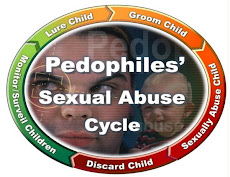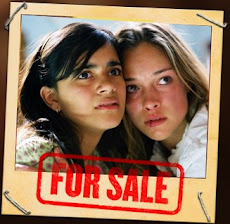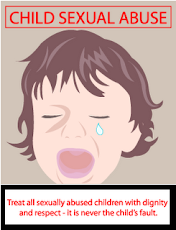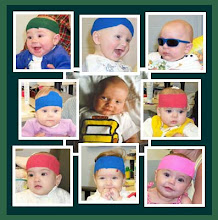
Prostitution of children
Provided by
DR WIDODO JUDARWANTO
CLINIC FOR CHILDREN
WE SMILE WITH YOU, WORKING TOGETHER SUPPORT ALL OF CHILDREN
Organized by Yudhasmara Foundation
JL TAMAN BENDUNGAN ASAHAN 5 JAKARTA PUSAT, JAKARTA INDONESIA 10210
PHONE : (021) 70081995 – 5703646
email : wido25@hotmail.com, cfc2006@hotmail.com
www.clinicforchildren.blogspot.com/
Prostitution of children refers to children having sexual intercourse for money. The definition of a "child prostitute" can vary depending on who is using the term. Under many laws a child is defined as anyone under the age of 18. The Optional protocol on the sale of children, child prostitution and child pornography to the Convention on the Rights of the Child states that the prostitution of children or child prostitution is the practice whereby a child is used by others for sexual activities in return for remuneration or any other form of consideration. The remuneration or other consideration could be provided to the child or to another person.
Most generally, the prostitution of children means that a party other than the child benefits from a commercial transaction in which the child is made available for sexual purposes - either an exploiter intermediary (pimp) who controls or oversees the child’s activities for profit, or a child abuser who negotiates an exchange directly with a child in order to receive sexual gratification. The provision of children for sexual purposes may also be a medium of exchange between adults.
The Worst Forms of Child Labour Convention, 1999 (Convention No 182) of the International Labor Organization (ILO) provides that the use, procuring or offering of a child for prostitution is one of the worst forms of child labor. This convention, adopted in 1999, provides that countries that had ratified it must eliminate the practice urgently. It enjoys the fastest pace of ratifications in the ILO's history since 1919.
The prostitution of children is seen as forming part of the commercial sexual exploitation of children (CSEC), and is sometimes connected to the trafficking of children for sexual purposes, and to child pornography. Child sex tourism also falls within the category of the prostitution of children.
Mary J. Ruwart, a candidate for the Libertarian Party, stated in April 2008 "Children who willingly participate in sexual acts have the right to make that decision as well, even if it's distasteful to us personally," Ruwart wrote. "When we outlaw child pornography, the prices paid for child performers rise, increasing the incentives for parents to use children against their will." [1] Shane Cory, the party's executive director, in response, then sent out a press release called "Libertarians call for increased communication to combat child pornography."[1] However, Cory was assailed by party hardliners. They saw the press release as endorsing greater federal prosecutorial control.[1] In contrast, Tipper Gore has stated "My concern for the health and welfare of children has nothing to do with politics: It is addressed to conservatives and liberals alike. Some civil libertarians believe it is wrong even to raise these questions - just as some conservatives believe that the Government should police popular American culture. I reject both these views. I have no desire to restrain artists or cast a chill over popular culture. But I believe parents have First Amendment rights, too." The fate of the family, the dignity of women, the mental health of children - these concerns belong to everyone." [2]
Terminology
Child prostitution is sometimes used to describe the wider concept of commercial sexual exploitation of children (CSEC). However, child prostitution excludes other identifiable manifestations of CSEC, such as commercial sexual exploitation through child marriage, domestic child labor, and the trafficking of children for sexual purposes.
It was the limitations of the term child prostitution that led to the development in the mid-1990s of the term commercial sexual exploitation of children as a more encompassing description of specific forms of sexual trade involving children. Nevertheless, ‘child prostitution’ remains in common usage and is indeed the wording embedded in international instruments of law.
Child prostitution is sometimes used to describe the wider concept of commercial sexual exploitation of children (CSEC). However, child prostitution excludes other identifiable manifestations of CSEC, such as commercial sexual exploitation through child marriage, domestic child labor, and the trafficking of children for sexual purposes.
It was the limitations of the term child prostitution that led to the development in the mid-1990s of the term commercial sexual exploitation of children as a more encompassing description of specific forms of sexual trade involving children. Nevertheless, ‘child prostitution’ remains in common usage and is indeed the wording embedded in international instruments of law.
Some believe that the terms child prostitution and child prostitute carry problematic connotations. They claim this is because these terms, on their own, fail to make it clear that children cannot be expected to make an informed choice to prostitute themselves. The act of prostituting a child is often carried out by another party, as stated in the definition provided by the Special Rapporteur on the sale of children, child prostitution and child pornography.
However, a number of people who are legally classified as children may, in fact, willingly engage in the practice of prostitution. This has been especially prominent in Japan, where it is not uncommon for teenagers and younger school-girls to sell their services to raise money for expensive clothing and accessories without the assistance of a "pimp".[3]
Causes
Children are often pushed by social structures and individual agents into situations in which adults take advantage of their vulnerability and sexually exploit and abuse them. Structure and agency commonly combine to force a child into commercial sex: for example, the prostitution of a child frequently follows from prior sexual abuse, often in the child's home.[citation needed]
The prostitution of children is usually conducted in particular environments, such as brothels, bars and clubs, or homes, or particular streets and areas (usually in socially downtrodden places). Sometimes it is not organized, but often it is, either on a small scale through individual pimps or on a larger scale through extensive criminal networks. See organized crime.
Children also engage in prostitution, however, when they exchange sex outside these environments and in return not only for basic needs such as accommodation, food, clothing, or safety, but also for extra pocket money for desired consumer goods otherwise out of their reach. There is a subculture of "pocket money prostitution" in many consumer societies, whereby girls and boys under 18 rent out their sexual services for cash or expensive gifts, or to save up for cars, motorcycles, even college tuition. In Japan it's called Enjo kosai "sponsored dating", in Germany "Schulmädchen-Strich/Strichjunge" (school girl street prostitution/boy-hooker). American/Canadian high schools are not exempt from this phenomenon.[citation needed]
These teenagers are prostituted in conditions that appear otherwise perfectly normal. Enjo kosai, the pay-dating practice reported in Japan, is considered a prime example of this. However, this latter practice is by definition voluntary rather than via manipulation.
Living and working conditions for children that are prostituted are frequently substandard. Such children are commonly poorly paid or unpaid, kept in unsanitary conditions, denied access to proper medical care, and constantly watched and kept subservient through threat of force. These threats may be physical or psychological in nature.[citation needed]
While some sex tourists may use children involved in prostitution, it has been argued that the majority of their 'clients' are instead the locals. Quoting from the back cover of a recent work:[4]
The Asian sex trade is often assumed to cater predominantly to foreigners. Sex Slaves turns that belief on its head to show that while western sex tourists have played a vital part in the growth of the industry, the primary customers of Asia's indentured sex workers and of its child prostitutes are overwhelmingly Asian men.
Prohibition
While the legality of adult prostitution varies between different parts of the world, the prostitution of minors is illegal in most countries. Furthermore, many countries whose citizens most frequently engage in international child procurement, such as the United States[5], Australia and European countries, enforce worldwide jurisdiction on their nationals traveling abroad.
As previously mentioned, some literature refers to prostitutes between 13 to 17 years of age as 'teenage prostitutes,' but the most common definition of a 'child' is a person who is under the age of 18. The latter definition is used by the ILO's Worst Forms of Child Labour Convention, discussed above. Therefore prostitution of children usually assumed to refer to the prostitution of persons under 18.[who?]
The laws of some countries do, however, distinguish between teenage prostitutes and the prostitution of younger children. For example, the Thai government defines a teenage prostitute as being between 15 and 18 years old, while the Japanese government defines one as being between 13 and 18. The basis for making this distinction may be that older children are considered legally able to consent to sex, while sex with younger children is automatically rendered unlawful as statutory rape. However, the definitions of teenage prostitution in some countries do not correlate to the relevant age of consent laws. In the People's Republic of China, all forms of prostitution are illegal, but having sexual contact with anyone under the age of 14, regardless of consent, will be charged with a more serious crime than raping an adult.
Prevalence
In 1992, researcher and expert Ron O'Grady estimated the number of child prostitutes to be 1 million. [6]
In 2001, Dr. Richard Estes and Dr. Neil Alan Weiner estimated that in the U.S., 162,000 U.S. homeless youth are victims of commercial sexual exploitation (CVE) and that 57,800 children in homes (including public housing) are estimated to be victims of CVE. They also estimated that 30% of shelter youth and 70% of homeless youth are victims of CVE in the United States.[7]
One third of street-level prostitutes in the U.S. are under 18 years old while fifty percent of off-street prostitutes are less than 18 years old.[7] Off-street prostitution includes massage parlors, strip clubs, and escort services. According to Estes and Weiner, 12 to 14 is the average age of entry into prostitution for girls under 17 years old in the United States while the average age of entry into prostitution is between 11 and 13. [7]
In the Ukraine, a survey conducted by the group “La Strada-Ukraine” in 2001-2003, based on a sample of 106 women being 'trafficked' out of Ukraine found that 3% were under 18, and the US State Department reported in 2004 that incidents of minors being trafficked was increasing.
In Thailand, NGOs have estimated that up to a third of prostitutes are children under 18. [8] A study by the International Labor Organization on child prostitution in Vietnam reported that incidence of children in prostitution is steadily increasing and children under 18 make up between 5 percent and 20 percent of prostitution depending on the geographical area. [9]
In the Philippines, UNICEF estimated that there are 60,000 child prostitutes and many of the 200 brothels in the notorious Angeles City offer children for sex.[10]
ECPAT New Zealand and Stop Demand Foundation have cited in a report “The Nature and Extent of the Sex Industry in New Zealand,” a police survey of the New Zealand sex industry that 210 children under the age of 18 years were identified as selling sex, with three-quarters being concentrated in one Police District. [11]
The 1996 report of the United Nations Special Rapporteur on the Sale of Children, Child Prostitution and Child Pornography estimates that about one million children in Asia alone are victims of the sex trade. According to the International Labor Organization, the problem is especially alarming in Korea, Thailand, the Philippines, Sri Lanka, Vietnam, Cambodia and Nepal. [12]
In 2001, Dr. Richard Estes and Dr. Neil Alan Weiner estimated that in the U.S., 162,000 U.S. homeless youth are victims of commercial sexual exploitation (CVE) and that 57,800 children in homes (including public housing) are estimated to be victims of CVE. They also estimated that 30% of shelter youth and 70% of homeless youth are victims of CVE in the United States.[7]
One third of street-level prostitutes in the U.S. are under 18 years old while fifty percent of off-street prostitutes are less than 18 years old.[7] Off-street prostitution includes massage parlors, strip clubs, and escort services. According to Estes and Weiner, 12 to 14 is the average age of entry into prostitution for girls under 17 years old in the United States while the average age of entry into prostitution is between 11 and 13. [7]
In the Ukraine, a survey conducted by the group “La Strada-Ukraine” in 2001-2003, based on a sample of 106 women being 'trafficked' out of Ukraine found that 3% were under 18, and the US State Department reported in 2004 that incidents of minors being trafficked was increasing.
In Thailand, NGOs have estimated that up to a third of prostitutes are children under 18. [8] A study by the International Labor Organization on child prostitution in Vietnam reported that incidence of children in prostitution is steadily increasing and children under 18 make up between 5 percent and 20 percent of prostitution depending on the geographical area. [9]
In the Philippines, UNICEF estimated that there are 60,000 child prostitutes and many of the 200 brothels in the notorious Angeles City offer children for sex.[10]
ECPAT New Zealand and Stop Demand Foundation have cited in a report “The Nature and Extent of the Sex Industry in New Zealand,” a police survey of the New Zealand sex industry that 210 children under the age of 18 years were identified as selling sex, with three-quarters being concentrated in one Police District. [11]
The 1996 report of the United Nations Special Rapporteur on the Sale of Children, Child Prostitution and Child Pornography estimates that about one million children in Asia alone are victims of the sex trade. According to the International Labor Organization, the problem is especially alarming in Korea, Thailand, the Philippines, Sri Lanka, Vietnam, Cambodia and Nepal. [12]
A 2006 report by World Vision Middle East/Eastern Europe funded by the Canadian government and supported by six United Nations agencies and the International Organization for Migration reported that the sexual exploitation of children, child trafficking and sexual violence towards minors is increasing and that Russia is becoming a new destination for child sex tourism. The report adds that some studies claim approximately 20 to 25 percent of Moscow's sex workers are minors.[13]
In Africa and South Asia, many countries are faced with a rising child prostitution rate and the linkage with tourism is evident.[citation needed] Child prostitution and the trafficking of children for sexual exploitation is also increasing in Europe, North America, Japan and Australia.[who?]
In Rio de Janeiro, the City Social Assistance Secretary estimates that there are 223 child prostitutes, both boys and girls. Some are transvestites. The transactions are intermediated by pimps. They charge from 2 reals to 30 reals, which is approximately from 1 US dollar to 15 US dollars. The children are between 10 and 17 years old. In some cases, the families are involved in the prostitution. [14]
References
- Thornburgh, Nathan (2008-05-21). "Can the Libertarians Go Mainstream?", time.com. Retrieved on 11 July 2008.
- Gore, Tipper (1988-03-14). "Curbing the Sexploitation Industry", New York Times. Retrieved on 11 July 2008. "One series of studies by researchers at the University of Wisconsin found that men exposed to films in which women are beaten, butchered, maimed and raped were significantly desensitized to the violence. Not only did they express less sympathy for the victims, they even approved of lesser penalties in hypothetical rape trials."
- Nguyen, Nguyet Thu. "Prostitution in Japan: A Young Body Worth a Profit". Retrieved on 2007-03-21.
- Back cover quote from: Louise Brown, Sex Slaves: The Trafficking of Women in Asia, Virago Press, 2001. ISBN 1860499031.
- US Dept. of Justice, Federal Efforts to Combat Interstate Sex Trafficking of Minors, retrieved April 23, 2007
- Ron O'Grady, The Rape of the Innocent, 1992
- Richard J. Estes, Ph.D., and Neil Alan Weiner, Ph.D. "Commercial Sexual Exploitation of Children in the U.S. Canada and Mexico," University of Pennsylvania, September 18, 2001.
- No Rio, crianças se prostitutem por R$ 2. Folha de São Paulo. October 10, 2007.
.jpg)









.png)

Tidak ada komentar:
Posting Komentar